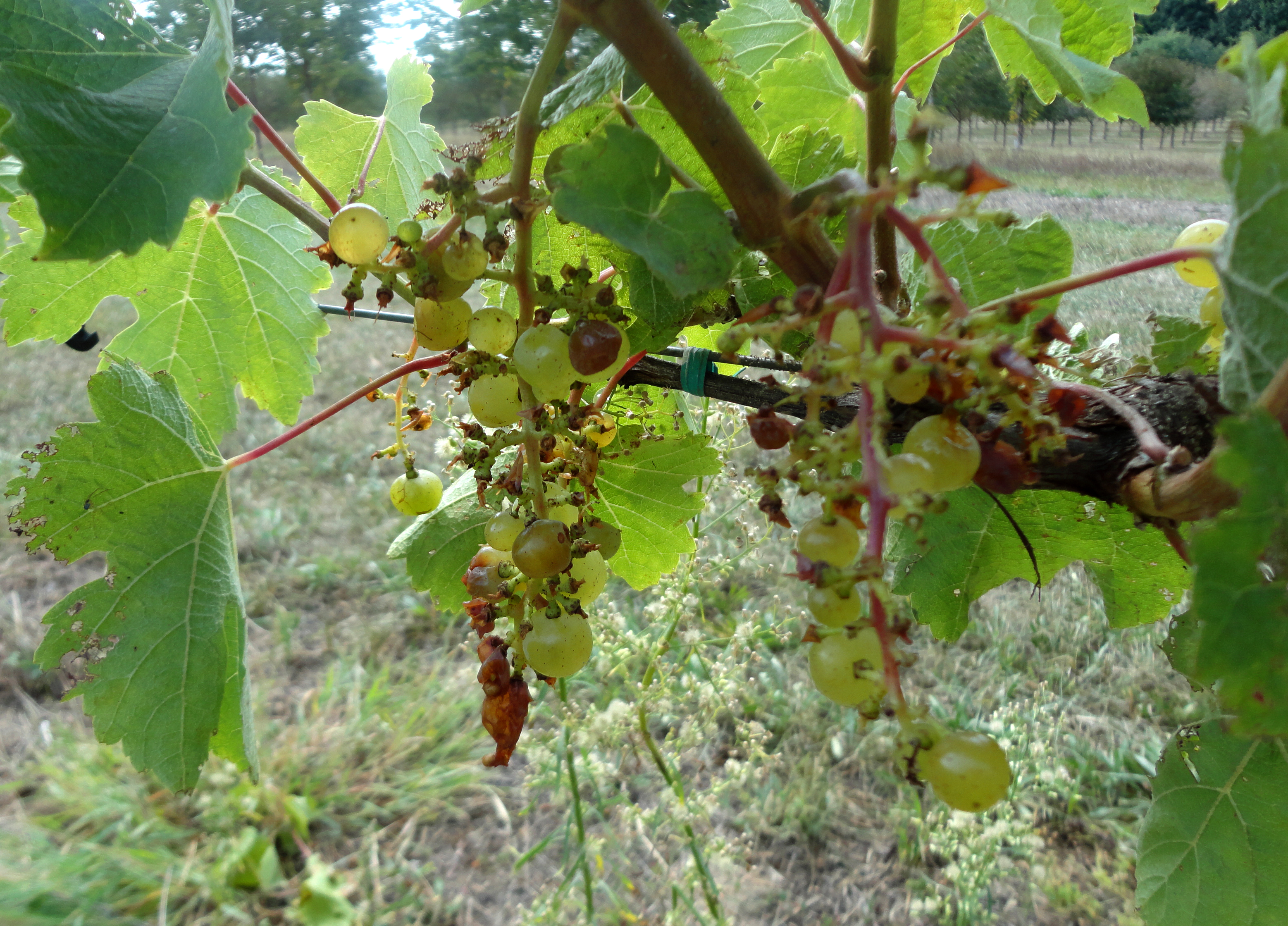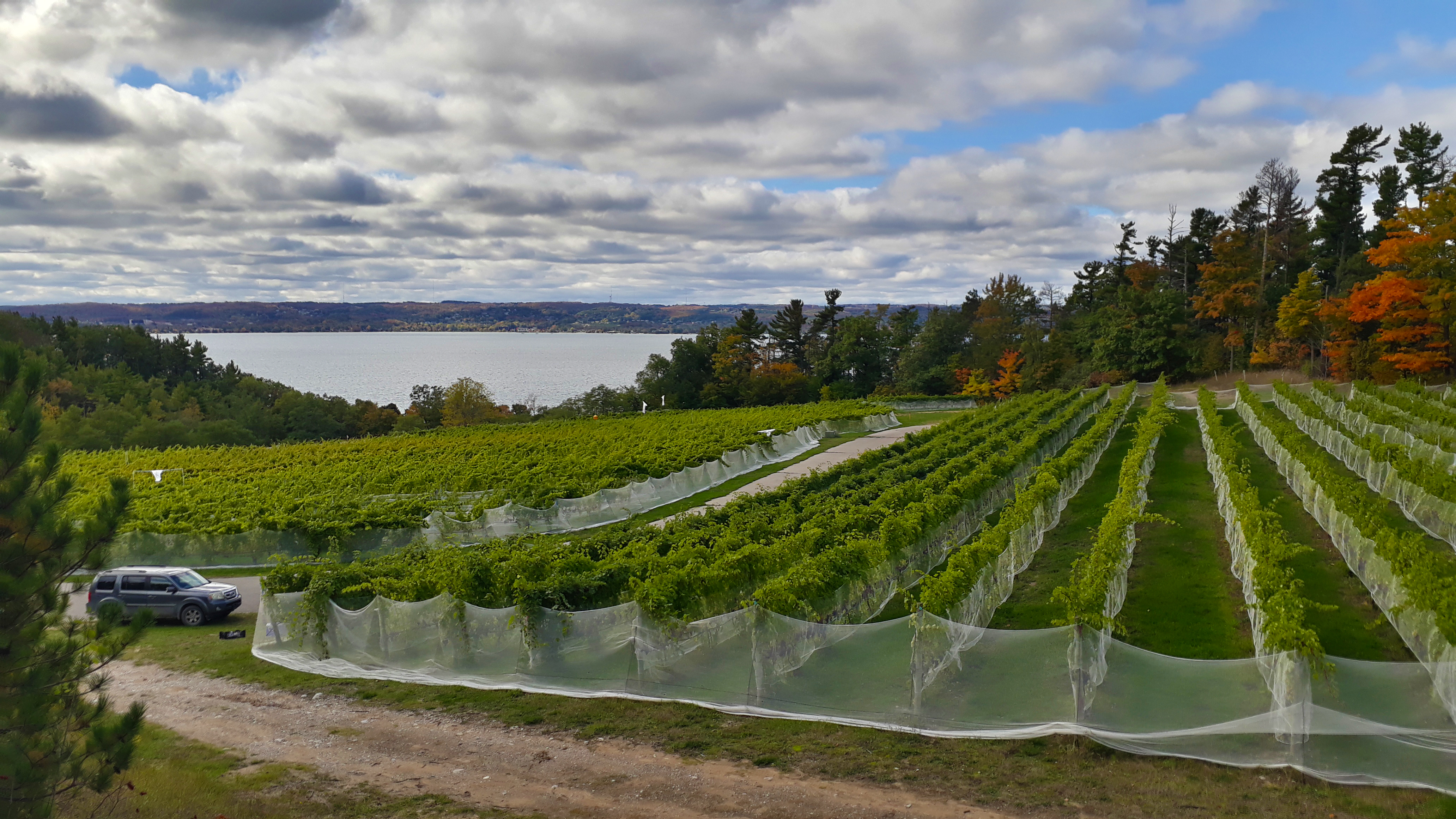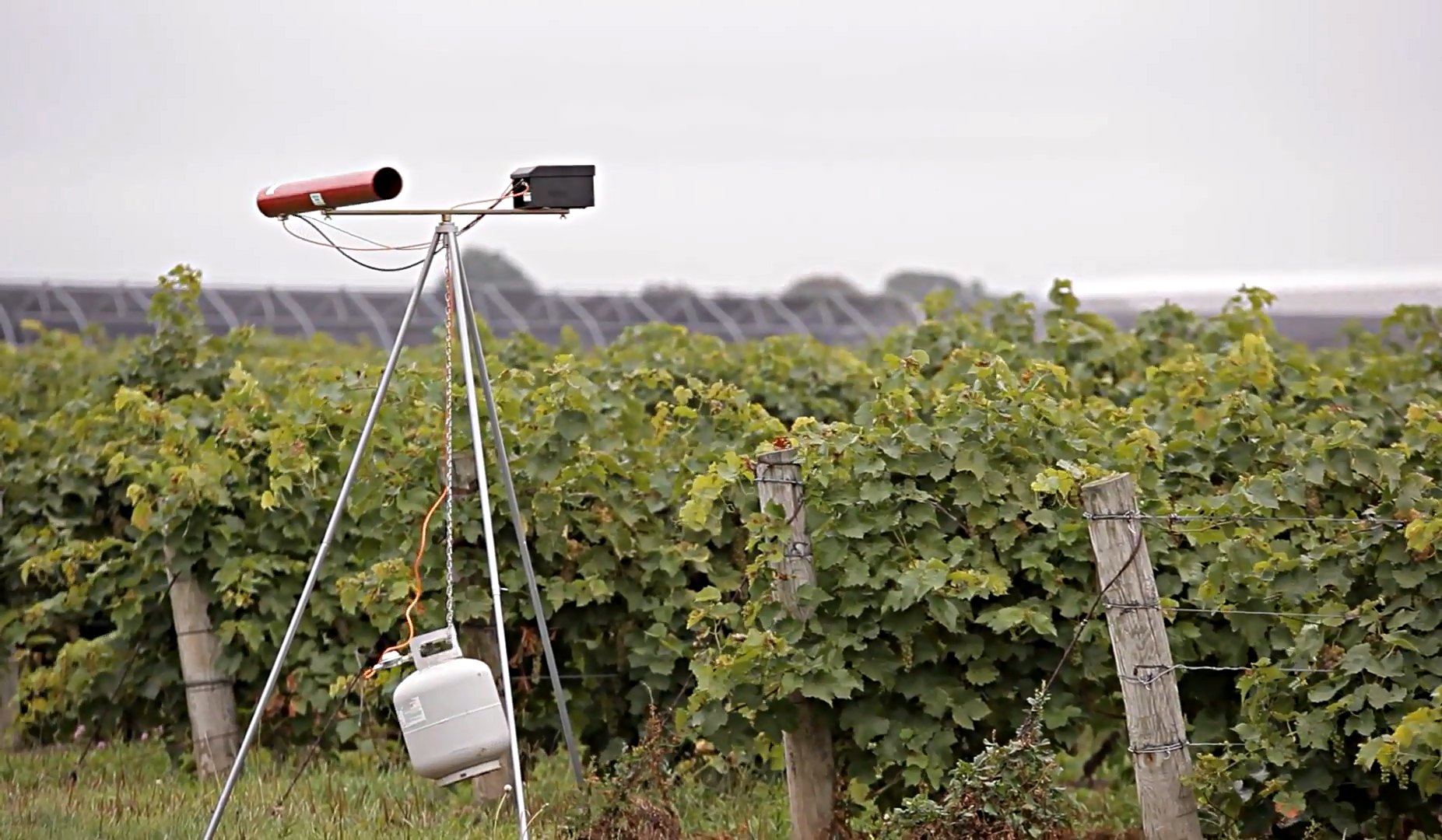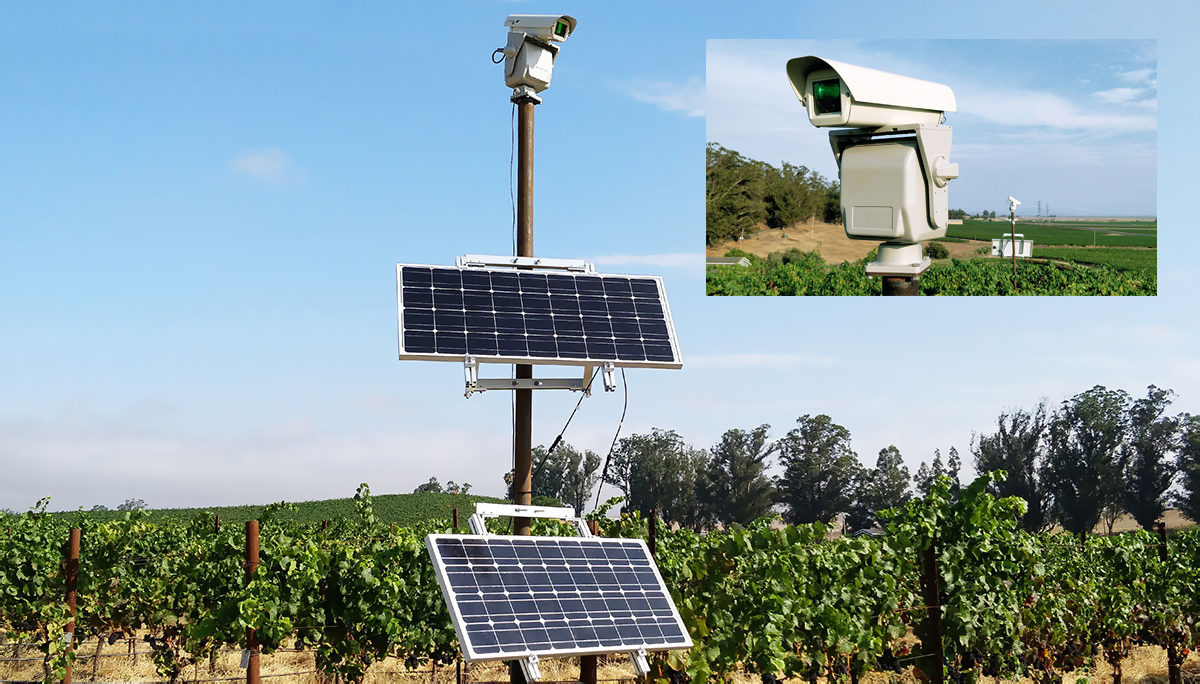Bird damage reduction strategies utilizing viticultural practices
Bird damage begins around veraison and continues until late fall/winter when grapes are harvested for ice-wine production. If you don't have bird control, crop losses can reach up to 95% and 60% in red and white varieties, respectively.

It is extremely difficult to stop birds once they have tasted the sweet grapes. Bird damage in the vineyard is a concern in any grape growing region, particularly in small blocks surrounded by forests or other vegetation. The damage begins around veraison when berries begin to accumulate sugar and color and it continues until harvest, even in late fall/winter when grapes are harvested for ice-wine production. Previous observations have reported that if you have no bird control, by late October crop losses can reach up to 95% and 60% in red and white varieties, respectively (Photos 1 and 2). Michigan has the highest percent of crop loss among grape producing states (Table 1).

|
Table 1. Annual bird damage in wine grapes in 2011. Source: “Bird damage to select fruit crops: The cost of damage and the benefits of control in five states” | |||
|---|---|---|---|
|
State |
Damage per acre (USD) |
Bird damage (%) |
Statewide (USD) |
|
California |
100 |
2.9% |
49,099,613 |
|
Michigan |
174 |
9.2% |
2,472,268 |
|
New York |
93 |
5.6% |
3,452,595 |
|
Oregon |
232 |
4.9% |
2,675,986 |
|
Washington |
383 |
7.6% |
12,892,063 |
Bird control strategies
Grape growers use a variety of strategies and techniques for bird control to prevent crop damages, including the use of bird nets, streamers, scare-eye balloons, electronic bird distress calls and propane-fired bird-scaring cannon.
One of the common strategies is protecting crops using a physical barrier, like nets. Although this strategy is very effective in preventing bird damages, it is very costly (about $1,000 per area); installing and removing nets is a time-consuming operation (Photo 3).

Another effective physical crop protection is propane-fired, bird-scaring cannon (bird banger). Triple-firing bird banger (Photo 4) is very effective for scaring birds away from the vineyards. The downside of this technique is that birds are getting used to the noise and they are not scared after a while. This technique has noise pollution and growers need to be tolerant of neighbors’ needs.

Visual bird control strategies
Visual deterrents
Birds respond to motions as well as objects that resemble their enemies. Visual deterrents are not adequate crop protections when used alone and are typically combined with acoustic systems for better results. Flying visual deterrents include:
- Tapes and streamers
- Kites shaped like birds of prey
- Model aircraft and UAVs
Robotic laser bird repellent
Laser bird repellent is a one of the visual and high-tech solution for bird control (Photo 5). This bird repellent method takes advantage of the natural instincts of a bird; birds see the approaching laser beam as a predator and take flight to seek safety when the laser beam passes by.
This technique could be a reliable bird control strategy because 1) it is nondestructive strategy, 2) it is environmentally and economically sustainable, and 3) it is simple and easy to install. Laser bird repellent provided important results in a 21-acre vineyard in Sonoma County, California. The vineyard with four laser units achieved a 99.8% bird reduction, saving $25,000 worth of fruit.

Chemical bird repellent
In addition to using a variety of bird control methods and techniques for bird control to prevent crop damages, some growers prefer chemical bird control to other bird control strategies. Not only does this bird repellent strategy not harm the birds themselves, but it is also mild enough to be used around people and other animals.
Major advantages of EPA approved bird repellent products include:
- Non-toxic and non-lethal bird repellent chemical
- Prevents birds from damaging crops
- Effective repelling of a number of species of birds including geese, starlings, pigeons and grackles
- Easy application through field, fogging or aerial spraying
- Effective for up to two weeks
- Low cost treatment—as low as $12.50 per acre
Disease implications
Bird damage can also allow other pests to contribute to yield loss (e.g., fungal pathogens and insect pests). Specifically, bird pecks can provide would sites for botrytis bunch rot and sour rot. For botrytis bunch rot, a new Michigan Grape Facts Sheet is now available for managing botrytis bunch rot, developed by Michigan State University Extension. For sour rot, any reduction in physical damage to the fruit can reduce the need for chemical control strategies. Typically, these strategies become important in tight clustered varieties (e.g., Vignoles) when fruit reach 13-15 Brix and require a combination of an insecticide and a fungicide.



 Print
Print Email
Email
